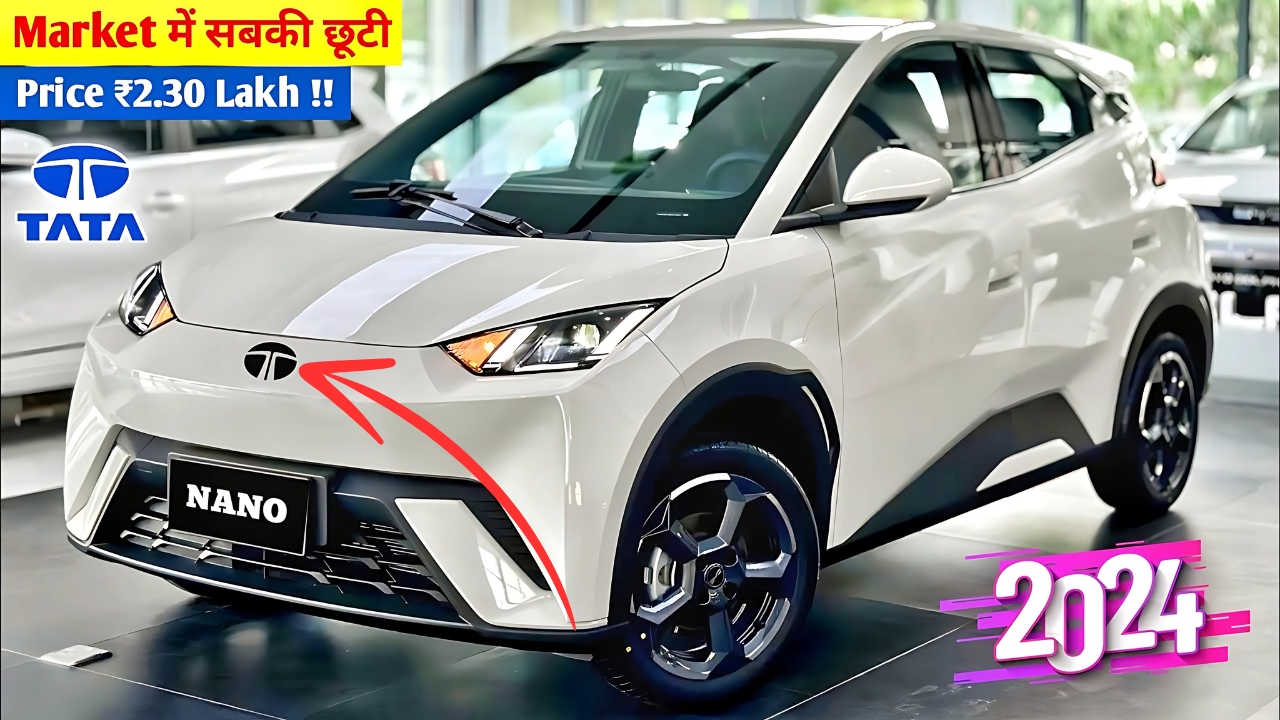In a surprising turn of events, the Tata Group has announced the revival of one of its most ambitious projects – the Tata Nano.
This compact car, once hailed as the world’s cheapest automobile, is set to make a grand re-entry into the Indian market with a host of modern updates and improvements.
The news comes just weeks after the passing of Ratan Tata, the visionary behind the original Nano, adding a poignant touch to this unexpected development.
A Vision Reborn
The Tata Nano, first conceptualized in the early 2000s, was Ratan Tata’s brainchild, born from his desire to provide safe and affordable transportation to Indian families.
The sight of entire families precariously balanced on two-wheelers on India’s busy roads inspired Tata to create a car that would be accessible to the masses.
Now, under the leadership of Noel Tata, the Tata Group is breathing new life into this vision, adapting it for the contemporary Indian consumer.
Modern Aesthetics Meet Compact Design
The new Tata Nano retains its famously small dimensions, perfect for navigating crowded city streets, but now boasts a refined exterior that speaks to modern sensibilities.
The redesign features sophisticated headlights and refreshed body contours, striking a balance between the car’s humble origins and current automotive design trends.
This updated look aims to appeal to both seasoned drivers and a younger, style-conscious demographic.
Performance Upgrades
At the heart of the new Nano is an upgraded 624cc petrol engine, promising improved performance without compromising on the car’s renowned fuel efficiency.
With a reported mileage of up to 30 kilometers per liter, the Nano continues to be an economical choice for daily commuters.
The car’s top speed has been increased to 105 km/h, making it suitable for both urban driving and occasional highway trips.
Comfort and Technology Enhancements
Inside, the new Nano offers unexpected comfort for its size. The interior has been reimagined with upgraded power windows, air conditioning, and a modern music system.
Redesigned seats and additional legroom now comfortably accommodate four adults, addressing one of the major criticisms of the original model.
A digital instrument cluster and an intuitive entertainment system bring the Nano firmly into the digital age, catering to the tech-savvy Indian consumer.
Safety First
In response to past concerns, Tata Motors has placed a strong emphasis on safety in the new Nano.
While specific details are yet to be released, industry insiders suggest that the car will meet current safety standards, potentially including features like airbags and ABS, which were absent in the original model.
Affordability Remains Key
Despite its upgrades, the new Tata Nano remains true to its roots as an affordable vehicle. With a starting price of just ₹2.5 lakhs, it continues to be one of India’s most accessible cars.
This pricing strategy, coupled with attractive EMI options, aims to make car ownership a reality for a wider range of Indian households.
Market Positioning and Target Audience
Learning from past experiences, Tata Motors is taking a different approach to marketing the new Nano.
Rather than emphasizing it as the “cheapest car,” the company is positioning it as an “affordable” and safe all-weather option for two-wheeler owners looking to upgrade.
This shift in messaging aims to avoid the stigma that affected the original Nano’s market perception.
Environmental Considerations
In an era of increasing environmental awareness, Tata Motors has also focused on making the new Nano more eco-friendly.
While not an electric vehicle, the car’s improved fuel efficiency and adherence to the latest emission norms position it as a responsible choice for environmentally conscious consumers.
Production and Availability
Production of the new Tata Nano is set to begin at Tata Motors’ Sanand plant in Gujarat.
The company plans a phased rollout, starting with major urban centers before expanding to smaller cities and rural areas.
While exact production numbers haven’t been disclosed, Tata Motors seems confident in the demand for this reimagined version of the Nano.
Industry Reaction and Market Impact
The announcement of the Nano’s comeback has stirred significant interest in the automotive industry.
Competitors are closely watching how this reintroduction might impact the entry-level car segment in India. Some analysts predict that the new Nano could potentially disrupt the market, especially given the current economic climate where affordable transportation is in high demand.
Carrying Forward Ratan Tata’s Legacy
The revival of the Tata Nano is seen by many as a tribute to Ratan Tata’s vision and persistence. It represents a continuation of his dream to provide affordable mobility to millions of Indians.
Noel Tata, in a statement, emphasized that the new Nano embodies the Tata Group’s commitment to innovation and social responsibility – values that were dear to Ratan Tata.
Tata Nano : A Second Chance for an Iconic Car
The relaunch of the Tata Nano marks a significant moment in India’s automotive history. It’s a story of resilience, adaptation, and the enduring power of a visionary idea.
As the new Nano prepares to hit Indian roads, it carries with it not just the hopes of the Tata Group but also the aspirations of millions of Indians for whom owning a car remains a cherished dream.
Whether this reimagined version will succeed where its predecessor struggled remains to be seen, but one thing is clear – the Tata Nano’s journey is far from over.
